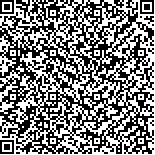徐日,俞坤强,马凯敏,等.间歇性θ节律经颅磁刺激左背外侧前额叶对脑卒中后运动性失语患者的影响[J].中华物理医学与康复杂志,2025,47(3):216-220
扫码阅读全文

|
| 间歇性θ节律经颅磁刺激左背外侧前额叶对脑卒中后运动性失语患者的影响 |
|
| |
| DOI:10.3760/cma.j.cn421666-20230913-00727 |
| 中文关键词: 脑卒中 运动性失语 间歇性θ节律经颅磁刺激 脑源性神经营养因子 |
| 英文关键词: Stroke Aphasia Theta burst stimulation Neurotrophic factors |
| 基金项目:浙江省基础公益研究计划(LGF20H170013);浙江省医药卫生科技计划(2024KY1876、2025KY1998) |
|
| 摘要点击次数: 1770 |
| 全文下载次数: 1818 |
| 中文摘要: |
| 目的 观察间歇性θ节律经颅磁刺激(iTBS)对脑卒中后运动性失语患者的语言功能、日常交流能力和血清脑源性神经营养因子(BDNF)的影响。 方法 募集脑卒中运动性失语患者60例,按随机数表法随机分为对照组和治疗组,每组30例。2组患者均接受常规言语训练,治疗组在常规言语训练的同时给予iTBS刺激左背外侧前额叶,对照组给予伪刺激。iTBS刺激每日1次,每次10 min,每周5 d,持续2周。于治疗前和治疗2周后(治疗后)采用中国康复研究中心汉语标准失语症检查量表(CRRCAE)和日常生活交流能力量表(CADL)分别评估2组患者的语言功能和日常交流能力,同时采用酶联免疫吸附法测定其血清BDNF的变化。 结果 治疗后,治疗组患者的CRRCAE量表评分和CADL评分与对照组治疗后比较,差异均有统计学意义(P<0.05)。治疗后,治疗组和对照组血清BDNF水平分别为(27.03±6.91)ng/ml和(22.20±5.89)ng/ml,均显著优于组内治疗前,且治疗组治疗后的血清BDNF水平亦显著优于对照组治疗后,差异有统计学意义(P<0.05)。 结论 在言语训练的基础上增加iTBS刺激,可显著改善脑卒中后运动性失语患者的语言功能和日常生活交流能力,其机制可能与iTBS刺激可提高患者血清BDNF的水平有关。 |
| 英文摘要: |
| Objective To observe the effect of intermittent theta burst transcranial magnetic stimulation (iTBS) on the language use, daily communication, and serum brain-derived neurotrophic factor (BDNF) levels of stroke survivors with motor aphasia (PSMA). Methods A total of 60 PSMA patients were recruited and randomly divided into a control group and a treatment group, each of 30. Both groups received conventional speech training, while the treatment group additionally received daily 10-minute iTBS stimulation over the left dorsolateral prefrontal cortex, five days per week, for two weeks. Before and after the treatment, language function and daily communication were assessed using the Chinese Rehabilitation Research Center Standard Aphasia Examination (CRRCAE) and the Communication Activities of Daily Living (CADL) scale. Serum BDNF levels were measured using enzyme-linked immunosorbent assay. Results After treatment, the CRRCAE and CADL scores in the treatment group were significantly higher than among the control group. The post-treatment serum BDNF levels in the treatment and control groups were (27.03±6.91)ng/ml and (22.20±5.89)ng/ml, respectively, both significantly higher than their pre-treatment levels. The average post-treatment serum BDNF level in the treatment group was significantly higher than the control group′s average. Conclusions iTBS stimulation with speech training can better improve the language function and daily communication ability of stroke survivors with motor aphasia. The mechanism may be related to increased serum BDNF level. |
|
查看全文
查看/发表评论 下载PDF阅读器 |
| 关闭 |